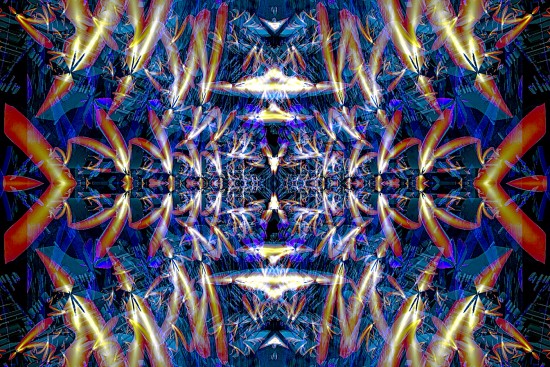Sep 11, 2015
Electric lace.
Electric Universe theory postulates that currents of electric charge flow through a galaxy along its spiral arms. A bridge across the galactic disk divides into upward and downward currents that flow back out of the poles and into the arms, again. This circuit is driven by an external electric charge flow, linking galaxies with the rest of the Universe. Presumably, billion-light-year long magnetically confined electric filaments transmit power from one end of space to the other.
According to a recent press release, astronomers found “evidence” for a cosmic thread connecting galaxies together throughout the Universe. A “protogalactic disk” near a quasar called UM287 is being supplied with gas from a “cosmic web filament”. The filament is described as brighter than it should be, so it “must be” a portion of what astronomers call the cosmic web, otherwise known as “the large-scale structure of the Universe”. In the early epochs of the Big Bang, “cool gas” was channeled along the cosmic web directly into galaxies. This is known as the “cool gas model“.
Astronomers continue to ponder how magnetic fields are generated around galaxies. They still do not know what gives those fields their shape and their strength. Most astronomers believe that galaxies are gravitationally bound clouds of hydrogen gas and dust that coalesced over billions of years, so electricity as a formative and continuously active agent escapes their notice. Magnetic fields in space are thought by modern astronomers to be “primordial” fragments left over from the Big Bang. They rely on that idea as an explanation for how the galaxies in the Universe were formed.
Conventional viewpoints acknowledge that galaxies form clusters, but it was not until recently that data analysis pointed to those clusters grouping together along vast filaments. Birkeland currents move through galactic cores, where they also generate a cylindrical particle beam effect at the edge of the disk, energizing a ring of stars, as well as aligning the galactic cores in a complex arrangement.
Galaxies are not gravitational objects (although gravity plays a part), they are a plasma phenomenon. Whenever changes occur in cosmic clouds of gas and ionized dust, such as from gravity or the influence of an electromagnetic field, regions of charge separation form. Separated charges induce electric fields, initiating electric currents. Electric currents form magnetic fields, confining the charge flow and squeezing them down into filaments.
Those confined charges increase the magnetic field strength, which squeezes the filaments even tighter. After a short time, Birkeland currents can form z-pinches, creating plasmoids that ignite like electric arcs. Since plasma events are scaleable by many orders of magnitude, filamentation and z-pinch phenomena are fractal in nature: from electrons to superclusters.
It is probable that the Universe is constructed from threads of matter. However, those threads are most likely electrical in nature. Since the idea that electricity flows through the Universe is commonly met with resistance by today’s consensus, electricity’s influence and attributes are unseen. It has long been said that “seeing is believing.” It should not be surprising that “believing is seeing” is more apt. When there is no inner experience, or context, outer realities can remain invisible.
Stephen Smith
Hat tip to Chris Phillips













